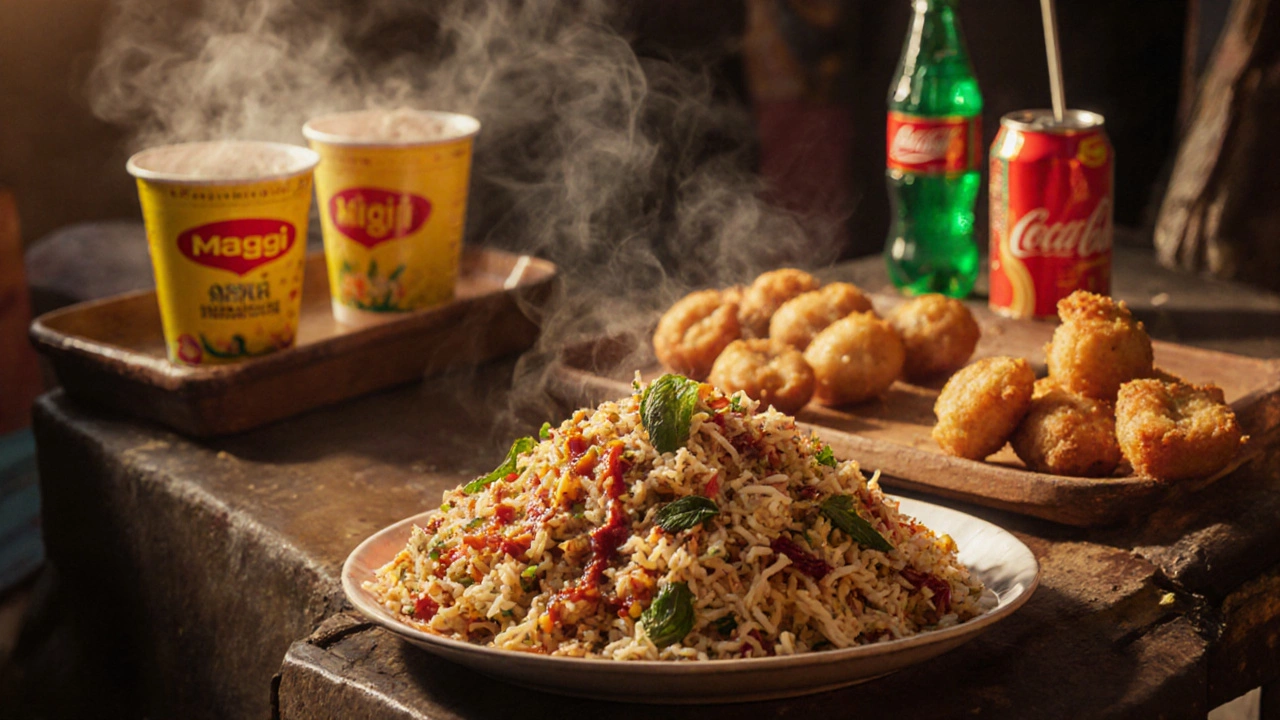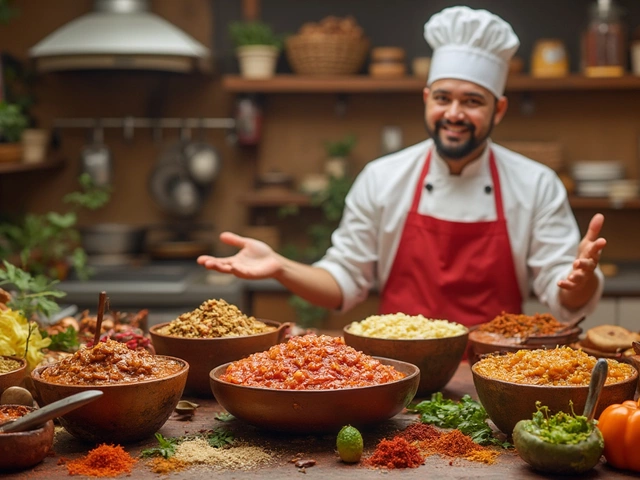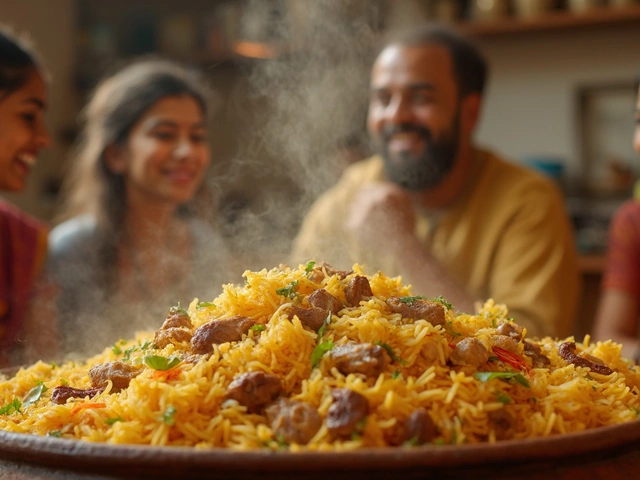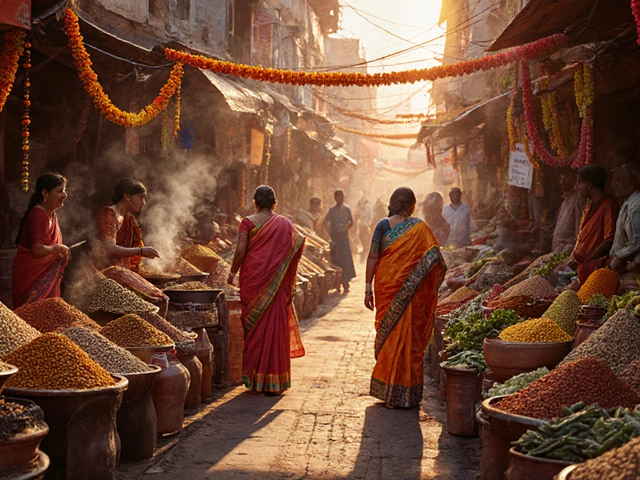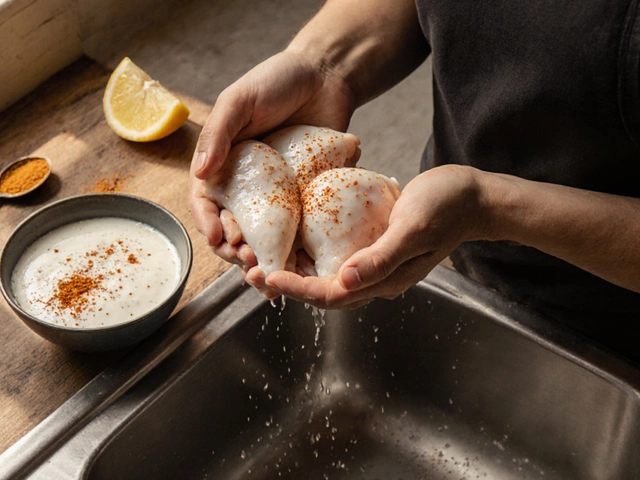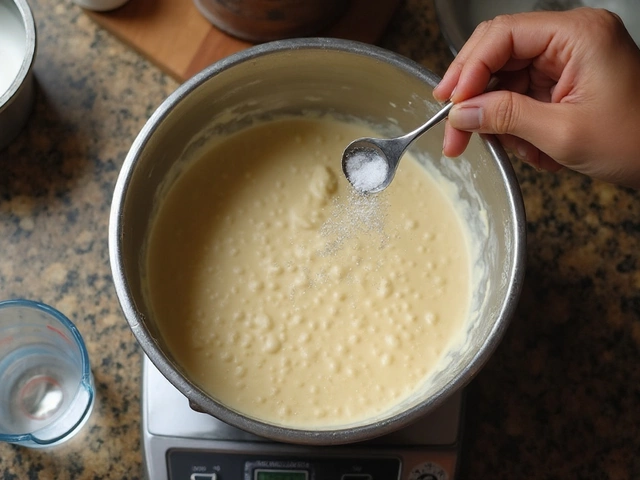Junk Food Swap Calculator
Select a junk food item below to see its healthier alternative and calculate the calories saved.
Your Swap Results:
Healthy Swap Options
Quick Summary
- Junk food in India blends western fast‑food items with locally beloved street snacks.
- Typical examples include pakoras, chaats, Maggi, and sugary drinks.
- High calories, refined carbs, unhealthy fats, and added salt make regular consumption a health risk.
- Urban lifestyles, aggressive marketing, and easy availability drive the surge.
- Swapping a few items for whole‑food alternatives can cut calories and improve wellbeing.
When people ask "what is junk food in India?" they are really looking for a definition that fits the country's unique food landscape. Junk food in India is any highly processed, calorie‑dense food or drink that offers little nutritional value and is consumed mainly for taste, convenience, or social reasons. It isn’t just imported burgers and fries; the term also covers home‑grown street treats that are fried, sweetened, or loaded with sodium. Below we break down the categories, explore why they are so popular, and give you practical tips for cutting back without missing out on flavor.
How India Defines Junk Food
India’s food culture is rich and varied, but the rise of urbanisation has introduced a new set of snacks that sit outside traditional meals. To understand the local definition, think of three key ingredients:
- Heavy processing - the product is packaged, preserved, or pre‑cooked.
- High levels of added sugar, salt, or unhealthy fats.
- Low satiety - you can eat a lot without feeling full.
Anything that ticks these boxes, whether it’s a packet of Maggi noodles or a bowl of chaat, falls under the Indian junk‑food umbrella.
Popular Junk Food Items Across the Country
Below is a quick run‑through of the most consumed junk foods, grouped by how they reach your plate.
- Fried street snacks: samosas, pakoras, kachori, and chaat mixes (panipuri, bhel puri). These are deep‑fried, salty, and usually drenched in tamarind or spicy chutneys.
- Packaged ready‑meals: instant noodles (especially Maggi), noodles cups, and microwaveable fried rice. They contain high sodium and often artificial flavors.
- Sweet treats: jaggery‑laden peda, overpriced bakery pastries, and mass‑produced chocolate bars. The sugar spike is the main concern here.
- Soft drinks and sugary beverages: carbonated cola, energy drinks, and sweetened iced teas. One 330ml can can have up to 40g of sugar.
- Western fast‑food chains: burgers, fries, and chicken nuggets from global outlets. While familiar, the Indian variants often add extra sauces that increase calorie count.
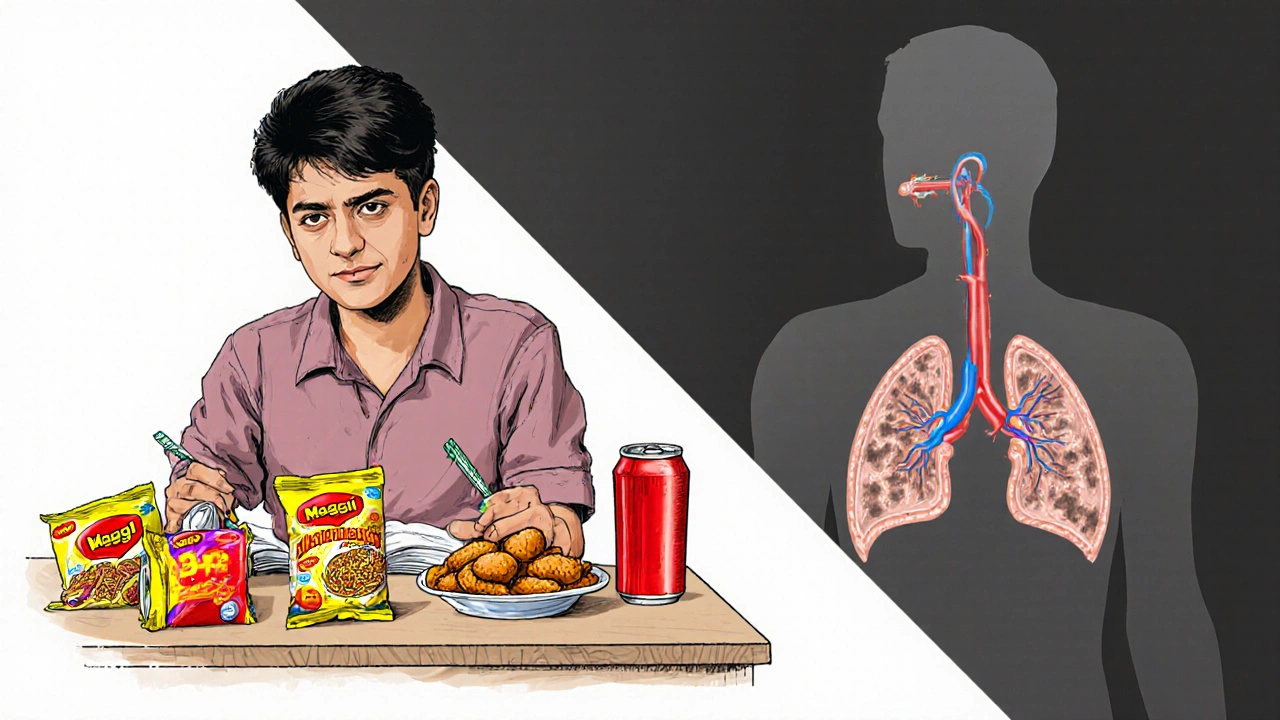
Health Risks Tied to Regular Consumption
Studies from the Indian Council of Medical Research (ICMR) show that frequent junk‑food intake correlates with rising obesity rates, type‑2 diabetes, and cardiovascular disease, especially in urban youth. A 2023 survey of 5,000 Delhi college students found:
- 68% ate fried snacks at least three times a week.
- Average daily calorie surplus from junk foods: 450kcal.
- Participants with highest junk‑food intake were 1.8times more likely to have elevated LDL cholesterol.
Beyond the numbers, the high glycaemic load of instant noodles and sugary drinks can cause energy crashes, mood swings, and digestive discomfort.
Why Junk Food Is So Ubiquitous in India
Three forces keep these foods on the table:
- Convenience: With long commutes and 9‑to‑5 jobs, a quick fry‑up or a bowl of noodles saves time.
- Cost: Most junk items are cheaper per calorie than fresh produce, making them attractive to students and low‑income families.
- Marketing: Brands invest heavily in TV and digital ads, often featuring Bollywood stars. The result is a cultural association of junk food with celebration and youth.
Even fast food chains adapt menus to regional tastes-think paneer‑topped burgers or spicy masala fries-further blurring the line between traditional and processed.
Smart Swaps: Enjoy the Flavor, Cut the Harm
You don’t have to give up all the foods you love. Small changes add up:
- Swap deep‑fried samosas with baked or air‑fried versions. Season with the same spices for familiar taste.
- Replace instant noodles with whole‑grain vermicelli tossed in veggies and a dash of soy sauce.
- Choose fresh fruit chaat (mix of seasonal fruits, chaat masala, and a squeeze of lemon) instead of sugary sweet‑puffs.
- Limit soft drinks to one per week; opt for infused water or homemade lassi with little or no added sugar.
- When ordering from a burger joint, ask for no‑mayo options, extra lettuce, and whole‑grain buns.
These swaps typically cut 150‑300kcal per meal while preserving texture and taste.
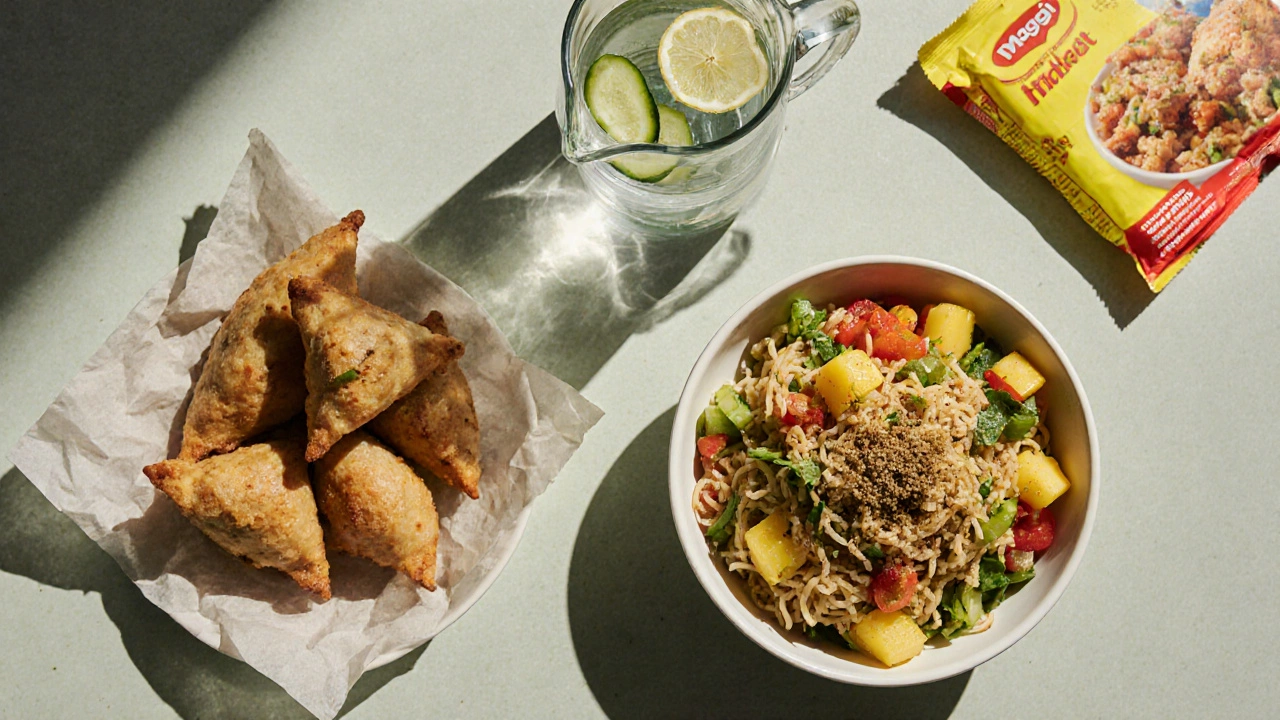
Comparison Table: Common Junk Foods vs Healthier Alternatives
| Junk Food Item | Typical Calories (per serving) | Healthier Swap | Saved Calories |
|---|---|---|---|
| Deep‑fried samosa (2 pcs) | 300kcal | Baked vegetable samosa (2 pcs) | ≈120kcal |
| Maggi instant noodles (single pack) | 350kcal | Whole‑grain vermicelli with veggies | ≈180kcal |
| Soft drink (330ml) | 140kcal | Lemon‑infused water | ≈140kcal |
| Chicken nuggets (6 pcs) | 420kcal | Grilled paneer tikka (6 pcs) | ≈200kcal |
| Masala fries (large) | 380kcal | Baked sweet‑potato wedges | ≈150kcal |
Mini‑FAQ
Is all street food considered junk food?
Not all street foods are junk food. Items that are boiled, grilled, or made with fresh vegetables and lean protein can be nutritious. The junk‑food label applies when the snack is fried, heavily salted, or loaded with refined carbs and sugars.
Do packaged snacks like namkeens count as junk food?
Yes. Most commercially‑produced namkeens contain refined flours, excessive salt, and trans‑fat, placing them firmly in the junk‑food category.
How often is it safe to eat junk food?
Occasional indulgence (once or twice a week) is generally okay for a healthy adult. Daily consumption raises the risk of weight gain and metabolic issues.
Are there Indian‑specific health guidelines for junk food?
The Ministry of Health’s 2022 dietary guidelines advise limiting fried foods, sugary drinks, and refined snacks to less than 10% of daily calories.
Can homemade versions be healthier?
Absolutely. Making samosas or chaats at home lets you control oil, salt, and sugar levels, turning a junk‑food into a balanced snack.
Takeaway Action Plan
Pick one of the swaps above and try it for a week. Track how you feel - many people notice steadier energy and fewer cravings. Remember, the goal isn’t total deprivation; it’s smarter, flavor‑focused choices that fit an Indian palate while keeping health in check.
By recognising what truly qualifies as junk food India and using the tips here, you can still enjoy the bustling food scene without compromising your future wellbeing.





